Raspberry meaty tomato: a variety with outstanding qualities
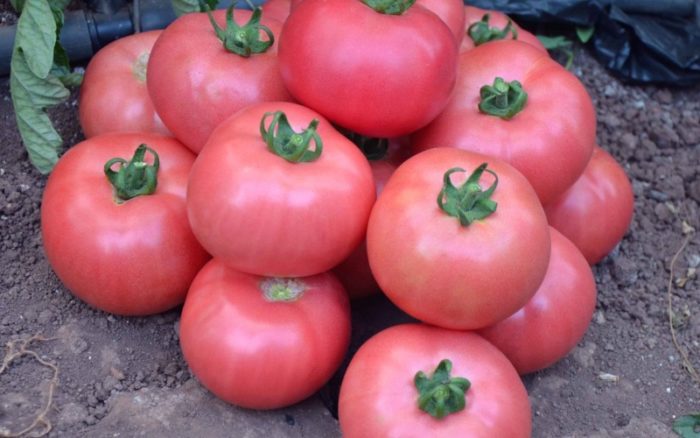
Tomato is a popular vegetable gardener among gardeners, for whom there is a garden at least on a plot. Varieties of various tomatoes on the seed market are now a great variety. Often the owner of the site is lost before the choice - what kind of variety to prefer.
It helps the gardener to more accurately orient and acquire what they want, a characteristic and description of each tomato variety, as well as photos and reviews about the yield, for example, Raspberry meaty. This variety is relatively young, appeared not so long ago.
But it has already proven itself very well, it is becoming increasingly popular.
Characteristic and description
This variety is very interesting especially for those who want to get an early production and already almost at the beginning of summer eat tasty tomatoes.
Description of the bush:
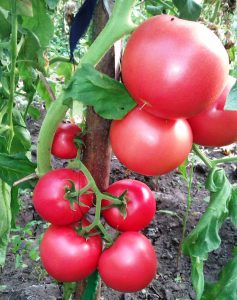
- early maturing, determinantal: he himself limits his height, does not need pinching tops;
- shtambovy: compact bush, stalk powerful, strong;
- from the emergence of seedlings to the beginning of ripening - 90-112 days;
- low bush: 40-50 cm3;
- stepsons forms a little and late, so that the stepson will almost not have to;
- it is necessary to tie it up: despite the short stature, the variety gives large fruits, they can bend the bush to the ground;
- the yield is quite high - about six kg of ripe tomatoes can be harvested from one bush (subject to the rules of agricultural technology for this variety);
- leafiness medium;
- long-term fruiting;
- large-fruited (350-450 g).
Fruit
Raspberry meaty tomatoes have endowed with outstanding qualities, thanks to which gardeners, gardeners are happy to grow them in their every season:
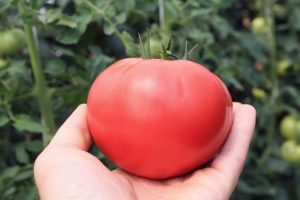
- pink-raspberry tomatoes;
- shape - flat-round, slightly ribbed;
- weight: 300-450 g;
- the skin is smooth, thin, but dense;
- sure resistance to cracking that provides excellent transportability;
- multichamber
- the pulp is densely fleshy, dense, fragrant, juicy;
- taste of high quality, sweet;
- a large amount of sugars, beta-carotene, solids.
Utility
The increased content of vitamins and minerals, beta-carotene and other useful substances contribute to improving health in late spring and early summer, when the body is still weakened after winter.
Purpose
Appointment is universal, salad. Very tasty tomato fresh, "from the bush," in salads and vegetable cuts. Also Raspberry meaty is great for technical processing: juices, pastes, lecho, mashed potatoes, sauces, adzhiki, which give a beautiful color and rich aroma. The fruits of this variety are well used in stewing, baking, frying with other products, and as a result of technical processing and cooking, these tomatoes do not lose their beneficial qualities and substances.
See also: Tomato "King of the Giants": how to get a rich harvest
Advantages and disadvantages
Everything in nature has its advantages and disadvantages.Raspberry meaty tomato has advantages and disadvantages.
Advantages:
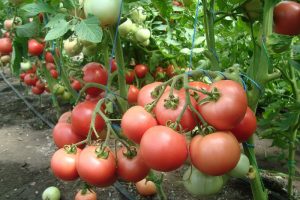
- fruiting long enough;
- large fruits;
- high commercial quality;
- great taste;
- universality of use;
- good keeping quality;
- resistance to various tomato diseases;
- yield is rich;
- the possibility of growing in any regions of the Russian Federation;
- perfectly dozaryvayutsya;
- do not crack;
- to care is not demanding;
- does not need formation;
- very few stepchildren;
- resistant to temperature extremes.
All these positive qualities of tomatoes make the variety very popular among gardeners, gardeners.
Disadvantages:
The disadvantage is that some consider the difficulties with canning a favorite variety - large fruits are practically not pushed into the canned neck.
Demanding on the soil: for large tomatoes to ripen quickly and become very sweet and tasty, to bear fruit for a long time and give a high-quality crop, they need additional feed.
That's all the flaws, which, however, many gardeners, gardeners consider advantages.
Features of growing varieties
Since the raspberry meaty variety is early ripe, its cultivation differs from the cultivation of other varieties in its characteristics.
Recommended growing regions
The variety is relatively young, so far there is not a lot of information about it. However, it is known that he bred by Russian breeders, allegedly attributed to the Siberian-Altai series of tomatoes. The originator is SeDec.
Raspberry meaty can be grown both in open ground and indoors.
Disease and Pest Resistance
Since the variety Raspberry meaty tomato is early ripe, it “leaves” from many tomato diseases, even from phytophthora. With the observance of the prescribed rules of agricultural engineering and the preventive measures taken, these tomatoes can grow quite calmly healthy and successfully bear fruit.
Diseases
Most often, this tomato gets sick with the wrong pattern of planting in the garden and with non-compliance with the rules of growing tomatoes in greenhouses.
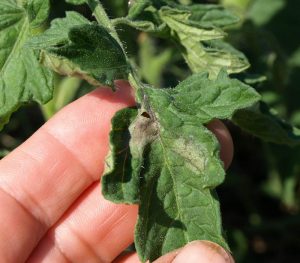
- The premises should be kept clean, disinfected after the harvest and before planting the seedlings (effectively using sulfur bombs).
- All plant residues should be removed from the greenhouse, weed regularly, preventing the growth of weeds, which are carriers of viruses and bacteria, spores of fungi and rot.
- You should regularly monitor the temperature and humidity and light levels; air the room.
Tip! In order for the plants in the greenhouse to be better and longer illuminated by the sun, it should be located from north to south (butt).
Preventive measures common to any soil:
- Observe the necessary for this class of distance in rows and aisles.
- Do not allow overmoistening of the soil, excessive moisture in the greenhouse.
- Regularly inspect the planting: at the first signs of infection, treat with fungicides, strictly following the dosage, the multiplicity of treatments prescribed in the instructions attached to them.
- Do not plant other tomatoes from the family of nightshade (peppers, eggplants, physalis, potatoes) next to the tomatoes.
- It is useful to carry out preventive treatments with solutions or infusions.
- Sick bushes are best removed from the site immediately, then burn them to prevent the spread of infection.
- Timely weed beds, remove weeds.
If you do not want to use chemicals, it is possible to treat tomato bushes with infusions or solutions according to popular recipes, using, for example, products such as:
- milk serum;
- saline solution;
- potassium permanganate + garlic;
- rotten hay or straw;
- Trichopolus;
- iodine + milk;
- ash;
See also: Tomatoes series "Date": abundance of fruit in each garden
Pests
Harmful insects can infect tomato bushes both in protected ground and in open beds.
Tomatoes are most often threatened (most - in the southern regions):
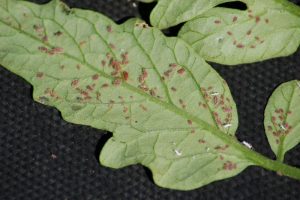
- whitefish;
- moth;
- sawfly;
- thrips;
- melon aphid;
- Colorado potato beetle (it attacks mainly seedlings, adult bushes no longer attract it).
Prophylactic spraying with various insecticides (Fitoverm, etc.), which will prevent harmful insects from damaging plants, are useful.
Preventive measures that help avoid pest attacks:
- crop rotation: it is impossible to plant the same crop in the same place every year in a row, because the larvae of harmful insects accumulate in the soil and in the next season they will attack tomatoes again;
- do not plant other crops from the family of the nightshade next to the tomatoes;
- do not thicken the planting: the plants should be better illuminated by the sun and ventilated;
- medicare plants: they scare off harmful insects from tomato bushes, which, moreover, carry various viruses (stunted marigolds, calendula, mustard, spicy herbs, parsley, snakehead, onions, such as chives, garlic, etc.),
- regularly remove weeds in which pests like to settle;
- It is useful to sprinkle the soil with finely crushed eggshell, red pepper, tobacco crumbs or dust to scare away slugs and other soil pests;
- beds are useful to have from north to south - this will provide the plants with better and longer sun illumination.
Also favorably affects the placement of tomato bushes square-nested way.
Timely preventive measures and careful observance of the prescribed simple rules of agrotechnology will free up time for the gardener, save money, keep the plants healthy.
Growing seedlings
It is easy to grow a seedling, and for it to be healthy, strong and resilient, it is useful to follow some rules for its successful cultivation.
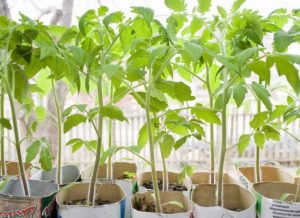
- Priming. If the soil is used purchased, then acquire it efficiently from proven manufacturers, look at the composition of the soil mixture. Some, however, prefer to cook it themselves. Universal recipe: garden land (2 hours) + river sand (1 hour) + lowland peat (1 hour) + rotted compost (1 hour); then complex fertilizers should be added to the prepared soil mixture - 40-70 g (per 10 liters of land - Kemira, Agricola, azophoska, nitrophoska). It is better to prepare the soil in the fall, so that the earth can “mature” Hint! For soil mixture it is better to take moles (freshly dug) or from where there is nettle, which is an excellent indicator of soil quality: it grows only on non-acidic, healthy, fertile land.
- Seeds. Seeds also benefit from a certain presowing treatment. They should first be soaked for 20-30 minutes in a dark pink solution of potassium permanganate, then for a day - in clean water, which should be changed every 3-4 hours, so that the seeds do not suffocate.Drain water, seeds can still be held in a solution of growth stimulants (Zircon, Appin, Potassium Humate, etc.) or biostimulants (Fitosporin, BaikalMi etc.) - dosages, soaking time is indicated in the instructions attached to the preparations.
- Capacities for seedlings. They can be anything: boxes, pots, cups, etc., only before use they must be thoroughly washed and sanitized, with the exception of peat pots. At the bottom of the tank should be a drainage hole for the flow of excess water.
- Preparing for sowing. Pour a layer of expanded clay or crumb brick or other drainage material (height 1-1.5 cm) on the bottom of the pot; put a layer of sand on the drainage (also 1-1.5 cm). then the soil is poured on the sand. Well everything is moistened. The soil surface should be lightly applied to the seeds do not fall to the depth.
- Sowing. Tomato seeds should be laid out on a well-moistened soil, then carefully poured a layer of moist soil on top (1.5 cm tall). All cover with plastic wrap or put in a plastic bag - until germination. Film 3-4 times a day should be opened for 5-10 minutes for airing.
- Shoots. As soon as sprouts appear, the containers should be transferred to the light, the film should be removed. It is necessary to water very carefully so as not to knock down the stream of tender and weak sprouts (it is convenient to use a syringe, a spoon, for example). It is necessary to water with warm, separated water between the rows.
- Picking Some gardeners consider it a compulsory procedure, others simply pour soil between sprouts, which is necessary for the formation of additional roots.
- Lighting. If the sprouts begin to stretch, the seedlings must be illuminated either with special fitolamps or fluorescent lamps.
- Quenching. For a couple of weeks or 10 days before landing in the ground, the seedlings should be gradually accustomed to fresh air and sunlight.
Transplant into the ground
Grown up tomato bushes should be planted in a warm to 12-15aboutWith soil.
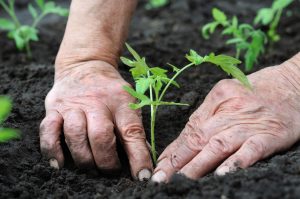
- The wells before planting should be moistened abundantly.
- When planting sprouts they need a little deep.
- If the seedlings are too stretched, it can be placed in the “reclining” holes, deepening more than normal.
- The distance between plants in rows should be at least 45-50 cm, between rows - about 60 cm.
- It is more useful to arrange rows from north to south, to plant bushes in a checkerboard pattern.
- Planting seedlings in the soil is best done in cloudy weather - it is easier for plants to adapt.
- After planting, you can shed the soil between the bushes, trying not to fall on the plants.
A few more rules for the care of tomato:
- Ideal neighbors can be: strawberries, cabbage, onions, radishes, carrots, beets, beans, lettuce, spinach, garlic, parsley, basil, spicy herbs, medicare plants.
- You can not plant tomatoes next to peppers, blue, potatoes, Physalis.
- Watering should be regular, but in moderation. It must be carefully observed.
- Do not forget about dressing during the growing season.
- Weed and loosen the soil regularly.
See also: Chinese way of growing tomato seedlings
In conclusion, it is worth noting: in order to grow tomatoes of the Raspberry meaty variety, it is useful to take into account its characteristics and description. Compliance with the prescribed rules of agricultural engineering will save time, effort, money, and tomatoes will grow healthy and strong, will give a rich harvest.
Video: 9 Secrets to a Good Harvest Tomato


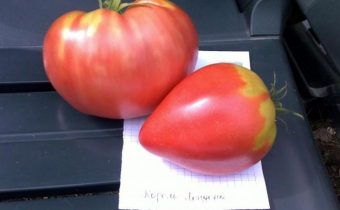
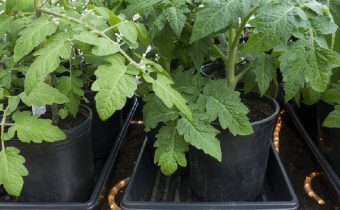
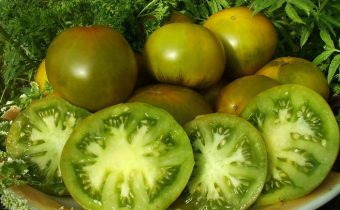
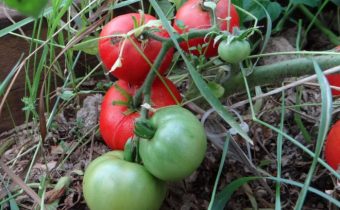
Sergei
One of the most delicious varieties of tomatoes, but at the same time one of the least resistant to pests. For those who spend most of their time on the site, you need to seriously think about how to protect it.